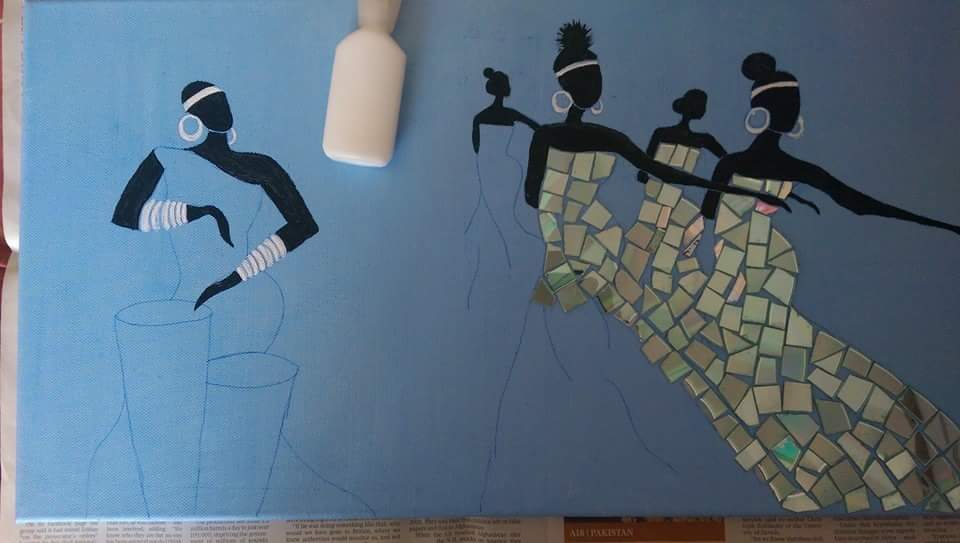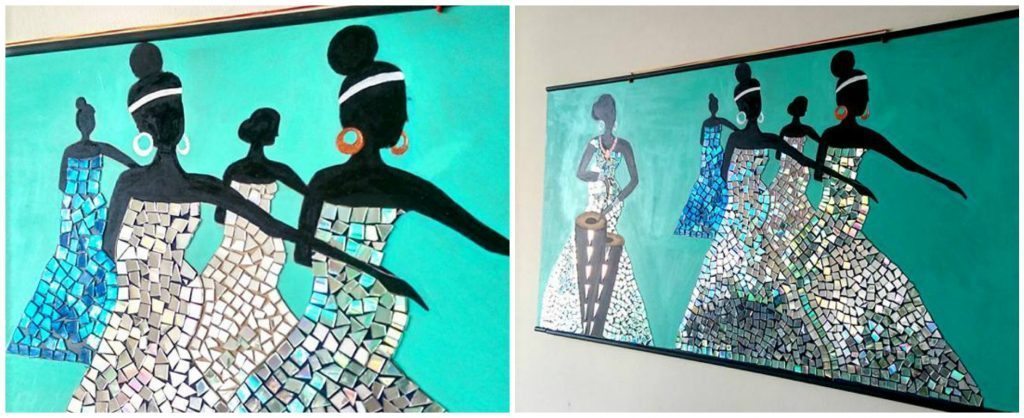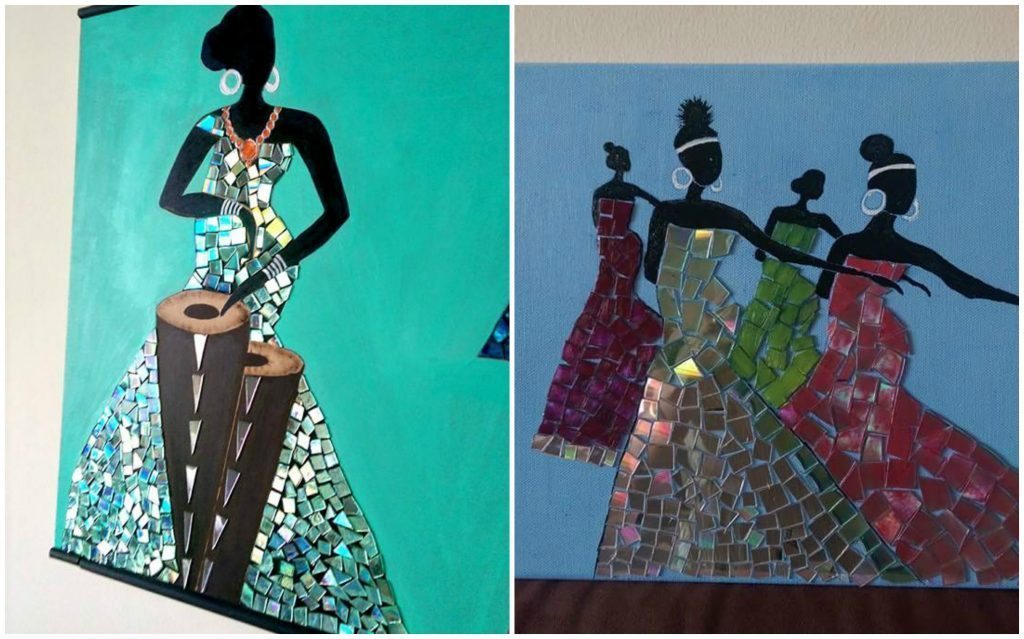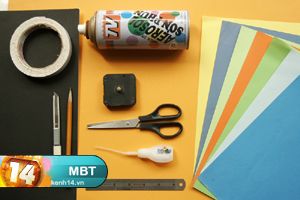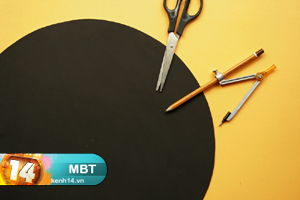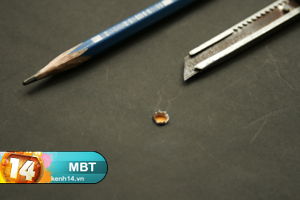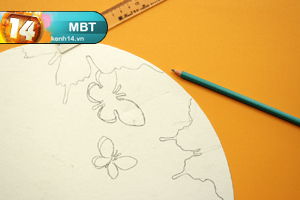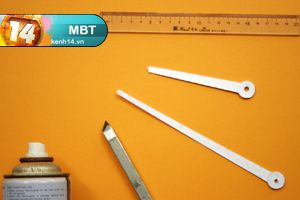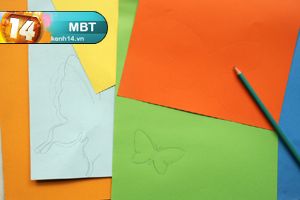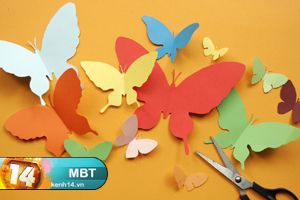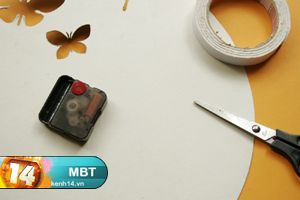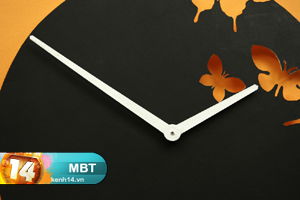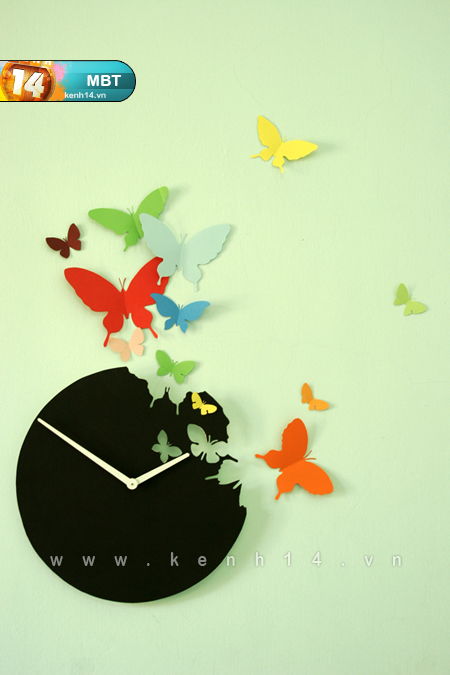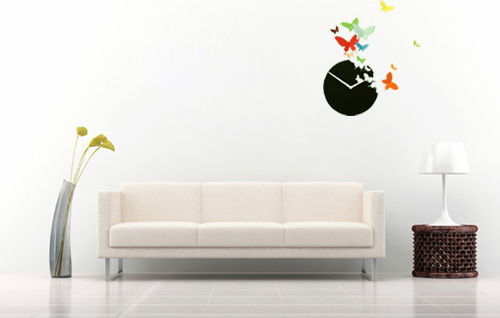First, you must select the fabric for curtains tailoring. Beautifully will look fabric with metal overflow. Well look contrasting transitions in tone.
In the present master class puffs sewn on the cornice of 1.3 m. For this you need a piece of fabric at a ratio of one to two, or 1 to 2.5 relative to the length of the cornice.
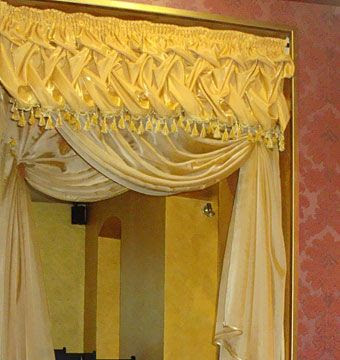 We eaves length 1.3 m – needs a piece of fabric 3.25 +0.5 (allowance at side seams), only 3.3 m.
We eaves length 1.3 m – needs a piece of fabric 3.25 +0.5 (allowance at side seams), only 3.3 m.
In width:
• 0,65 m 3-band (as in the diagram), the height of product in finished form 0.45 m;
0.83 m • 4-band products in finished form height 0.55 m;
• 1,01 m-5 strips off the shelf height 0.65 m.
Learn, please scheme. See photos.
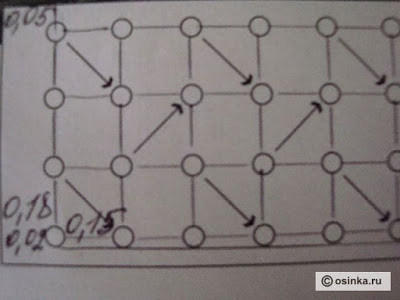 he harvested tissue peruse for defects, check the length and width, steamed iron.
he harvested tissue peruse for defects, check the length and width, steamed iron. The sides of the future curtains See photos.
The sides of the future curtains See photos. 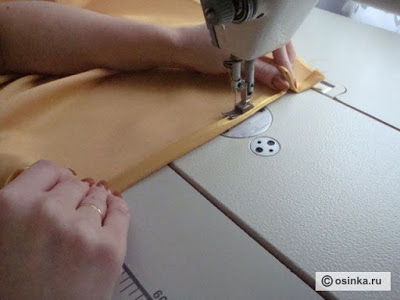 For comfortable work and avoid errors, you need to make patterns out of cardboard.
For comfortable work and avoid errors, you need to make patterns out of cardboard.
1. №1 = 8 cm (6 cm – width webbing + 1 cm seam tape+ 1 cm volume)
2. №2 = 18 cm;
3. №3 = 15 cm.  Choose a place where we are going to create your masterpiece. Ideal – a large table. It decompose and flatten stripped cloth. The fabric should lie face down.
Choose a place where we are going to create your masterpiece. Ideal – a large table. It decompose and flatten stripped cloth. The fabric should lie face down.
Take the mold 8 cm wide (№1) applying it to the upper tissue slice. 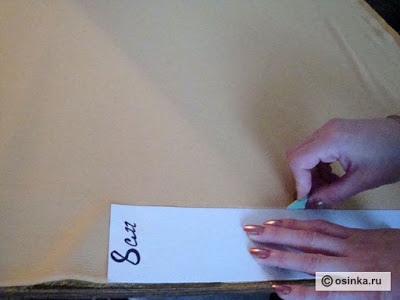 Now, take the curve №2 (width 18 cm), apply to have the line drawn by again drawing a line along the entire length of our fabric. Repeat this process three times. We have to be parallel to the line width: 8 cm, 18 cm, 18 cm, 18 cm
Now, take the curve №2 (width 18 cm), apply to have the line drawn by again drawing a line along the entire length of our fabric. Repeat this process three times. We have to be parallel to the line width: 8 cm, 18 cm, 18 cm, 18 cm 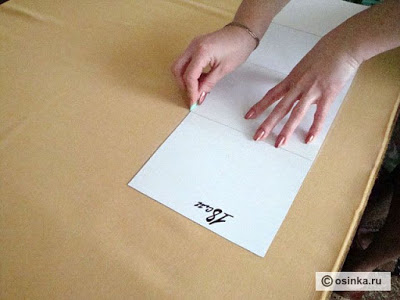 Take curve №3, we are putting any of the side seams and perpendicular lines to the already drafted. We get the mesh.
Take curve №3, we are putting any of the side seams and perpendicular lines to the already drafted. We get the mesh. 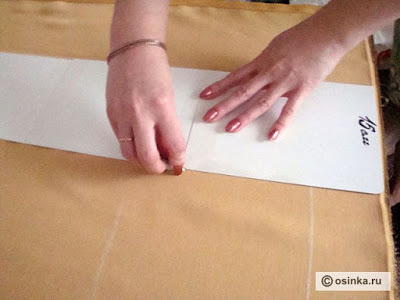 To make it convenient to work in the cells draw a diagonal, as shown in the photo.
To make it convenient to work in the cells draw a diagonal, as shown in the photo. 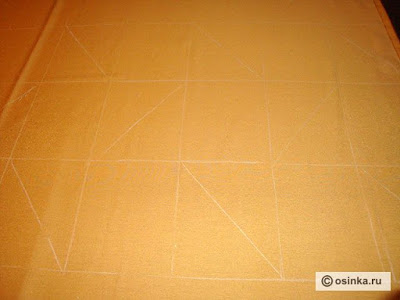 Take the needle and thread in tissue tone, and at the cell diagonally fasten the first puff.
Take the needle and thread in tissue tone, and at the cell diagonally fasten the first puff.  Stitches tacks do five – six times.
Stitches tacks do five – six times.  Secure all puffs for this series.
Secure all puffs for this series. 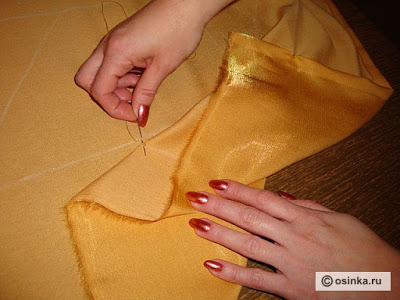 The next series begin to fix on the side where you’ve finished the first row whip. Follow the scheme.
The next series begin to fix on the side where you’ve finished the first row whip. Follow the scheme.  Third row starts where finished second whip. And so all the rows under the scheme. Be careful.
Third row starts where finished second whip. And so all the rows under the scheme. Be careful. 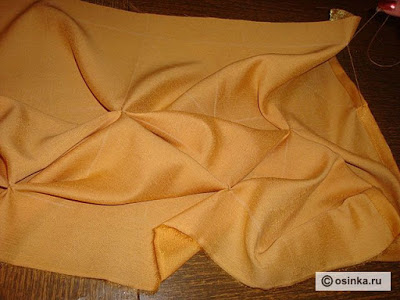 This is the result of the first phase of your work. The truth is impressive?
This is the result of the first phase of your work. The truth is impressive? 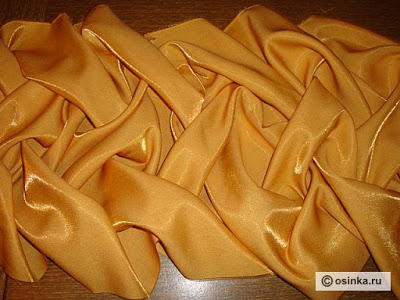 The bottom of the curtains in our master class we will process the fringe. In fact, the methods of processing weight: seam in the hem, processing piping, lace, beads …
The bottom of the curtains in our master class we will process the fringe. In fact, the methods of processing weight: seam in the hem, processing piping, lace, beads …
like fabric, you need to advance to steam and smooth 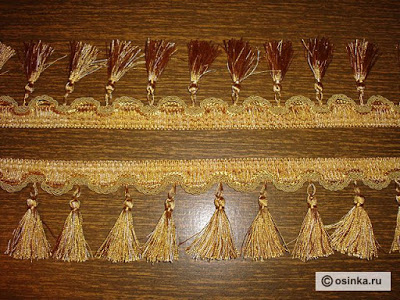 We are putting a fringe to the bottom edge of the curtains. We combine slices. Fabric and fringe wrong side together. Sew,
We are putting a fringe to the bottom edge of the curtains. We combine slices. Fabric and fringe wrong side together. Sew,  Now, gently loosen the fringe on the front side. Do this for the entire length of the edge of the fringe and paving machines line.
Now, gently loosen the fringe on the front side. Do this for the entire length of the edge of the fringe and paving machines line.  Bottom curtains ready. Look inside out – it’s perfect.
Bottom curtains ready. Look inside out – it’s perfect.  It remains to handle the upper section of the curtains. Take special braid for processing top curtains. Put them to the wrong side of each other. Pre-need to hem curtains and braid 1 cm. Sew their machine stitching.
It remains to handle the upper section of the curtains. Take special braid for processing top curtains. Put them to the wrong side of each other. Pre-need to hem curtains and braid 1 cm. Sew their machine stitching.  Lay the second parallel line is strictly for lace center. Line lay on the front side. The ends of the thread carefully hide.
Lay the second parallel line is strictly for lace center. Line lay on the front side. The ends of the thread carefully hide. 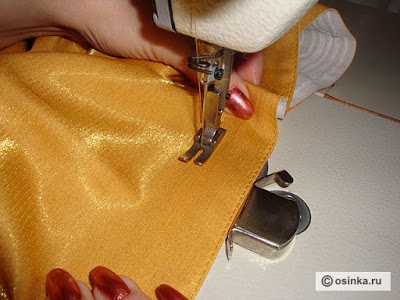 Run the same parallel line on the edge of the tape. Gently pull the fabric by hand.
Run the same parallel line on the edge of the tape. Gently pull the fabric by hand. 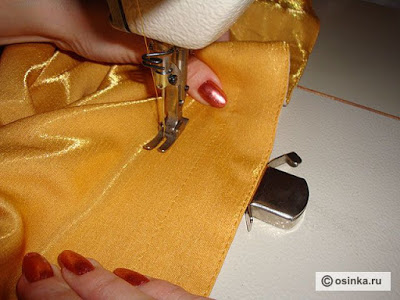 Contractible four strands to braid. Puffs acquire a very different kind.
Contractible four strands to braid. Puffs acquire a very different kind. 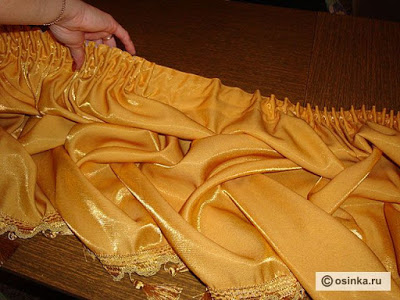 And then, finally, the result of work. Beauty, is not it?
And then, finally, the result of work. Beauty, is not it?  So, this curtain looks in the doorway.
So, this curtain looks in the doorway. 
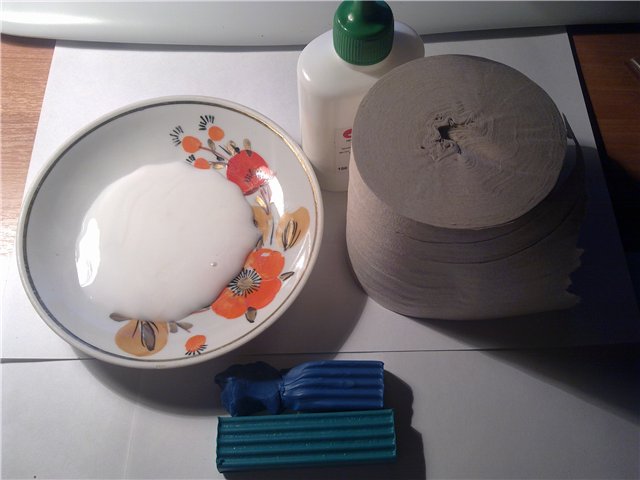
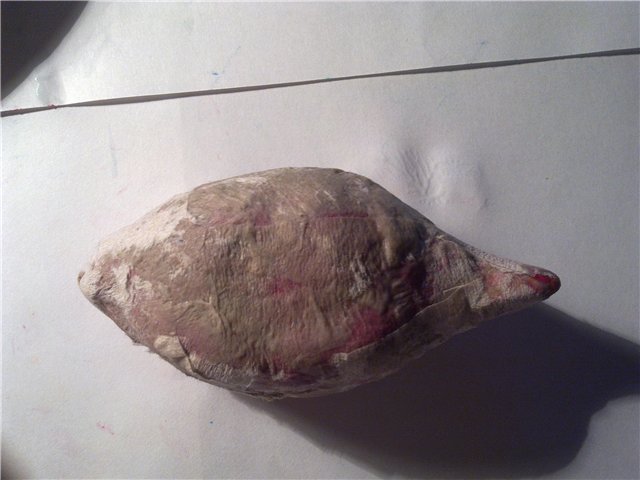
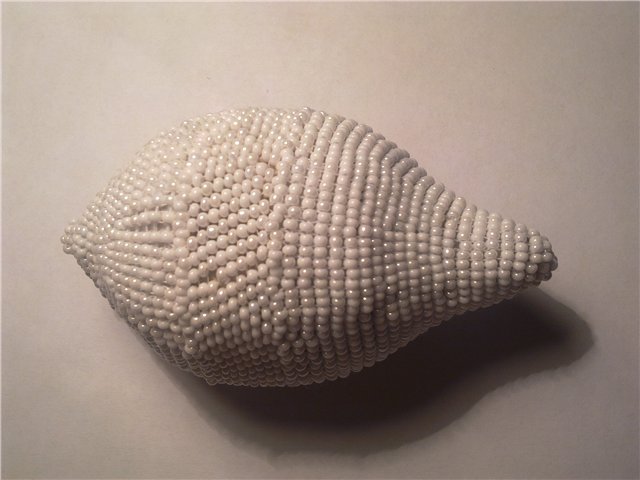
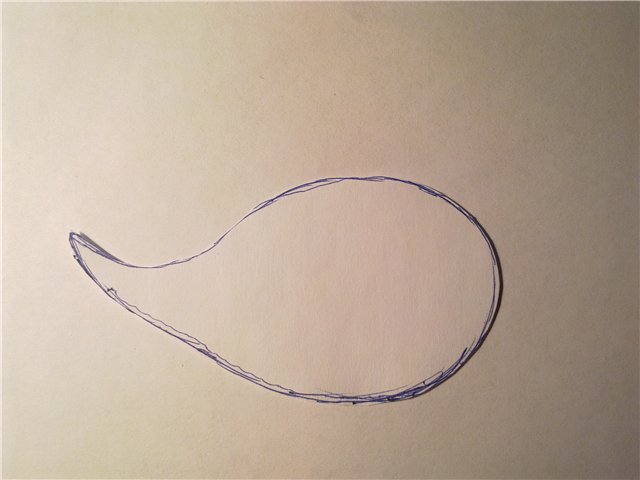

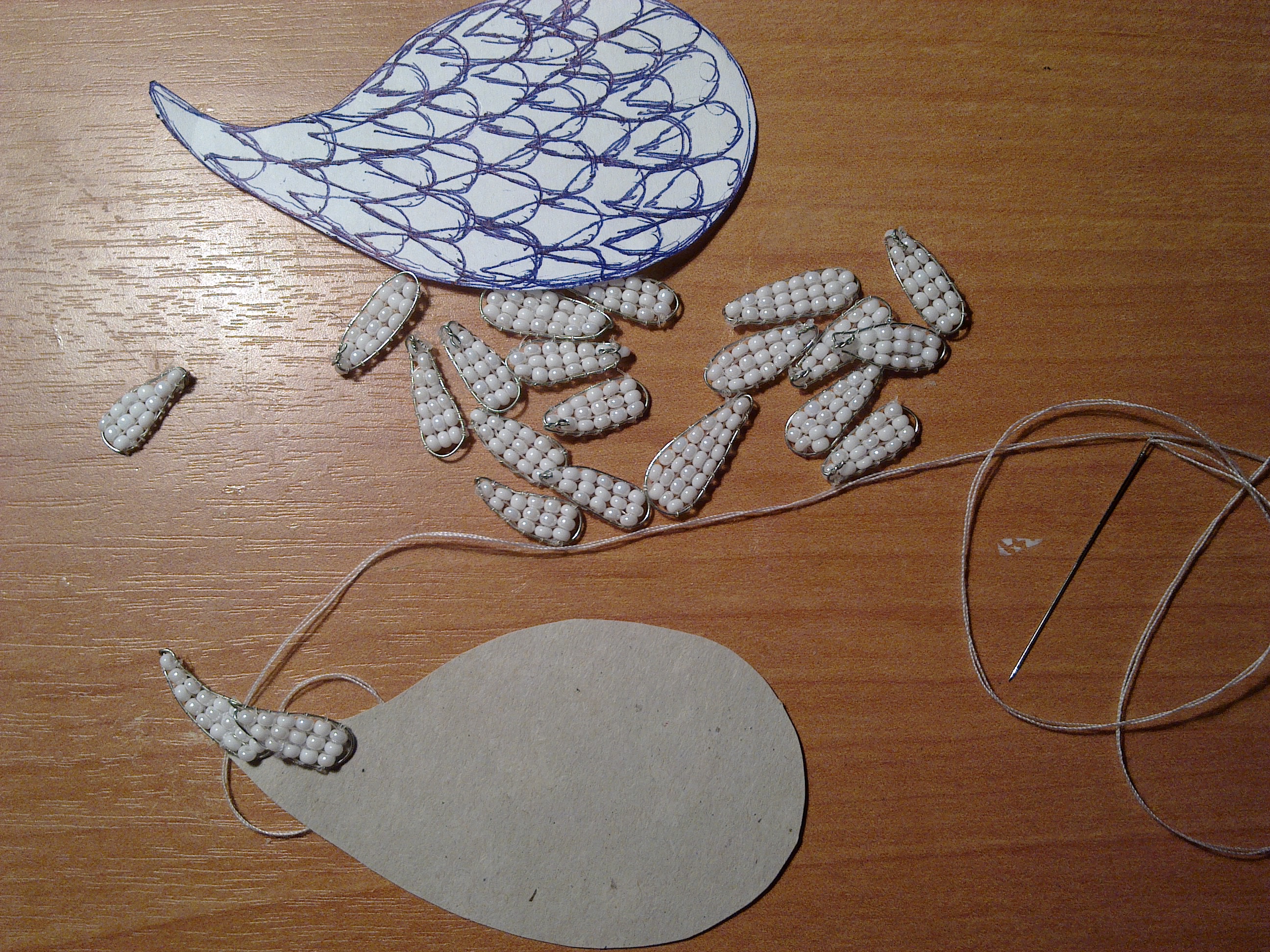






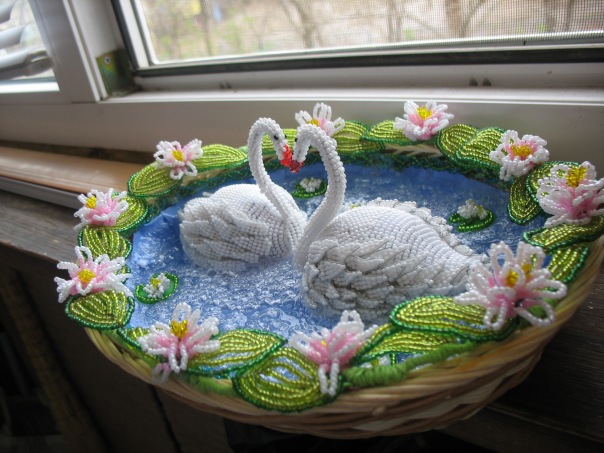


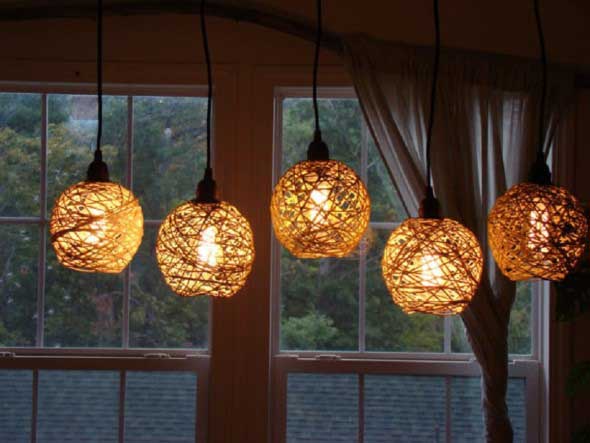
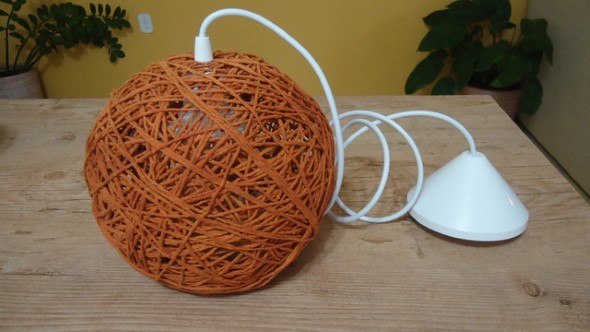
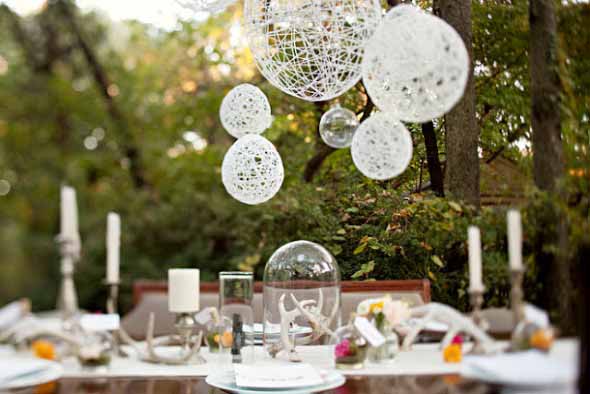
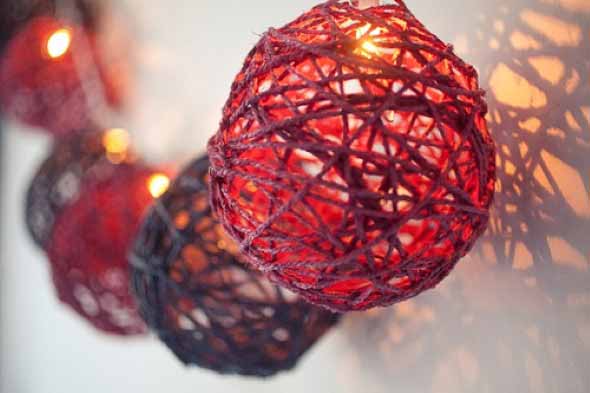
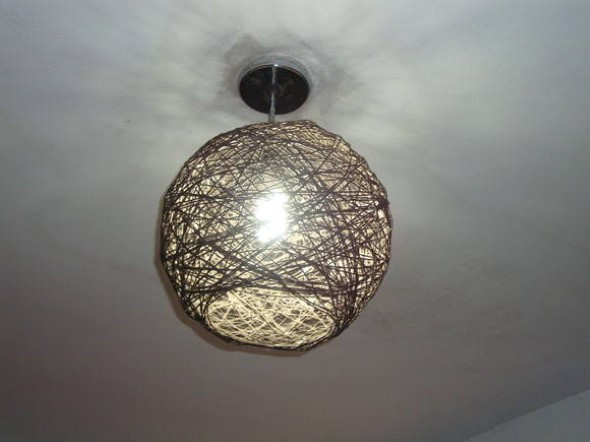
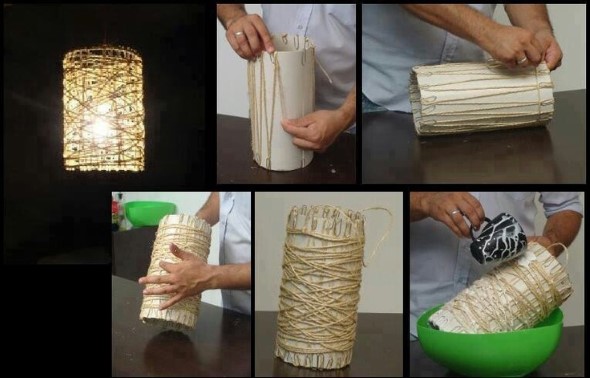
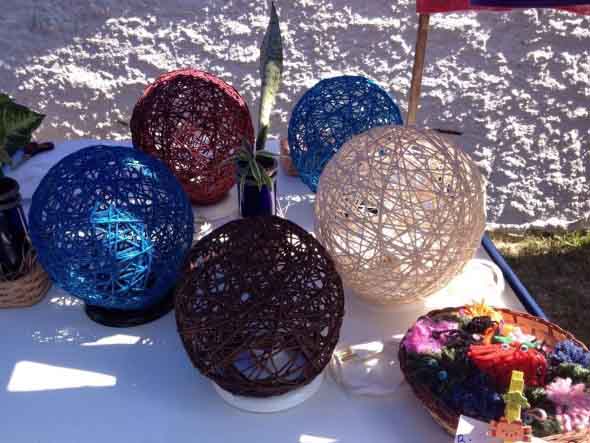





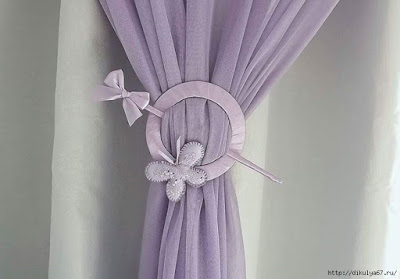
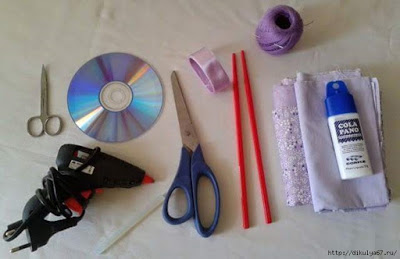

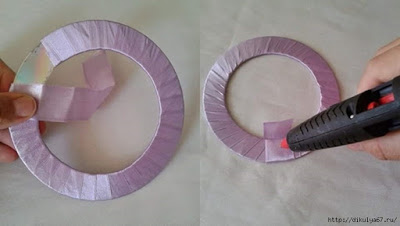

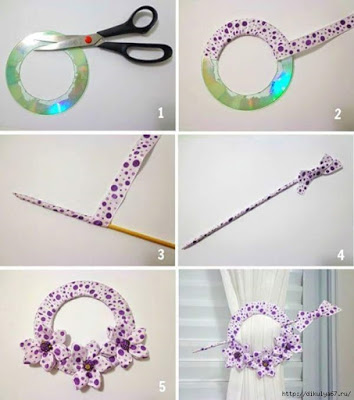
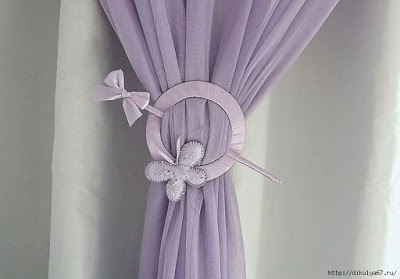
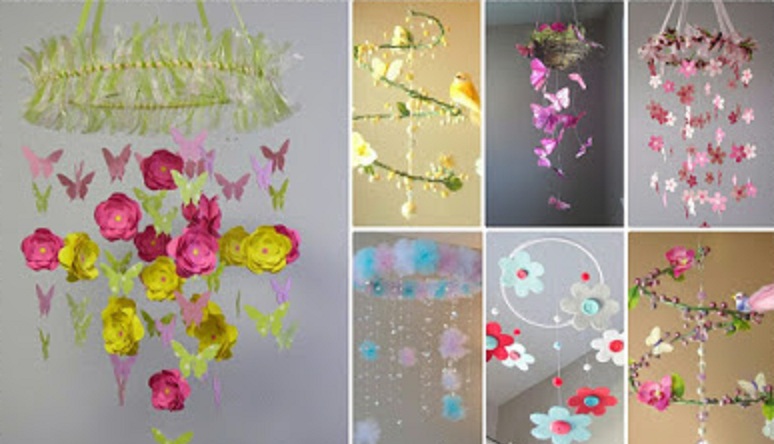

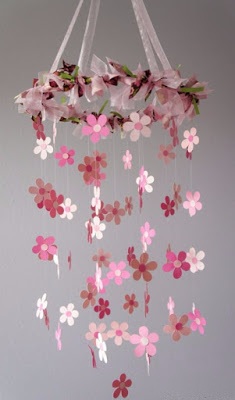
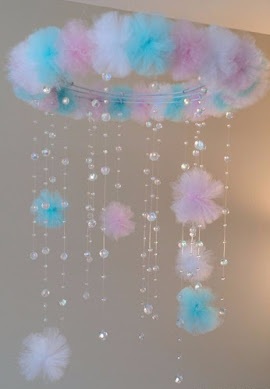

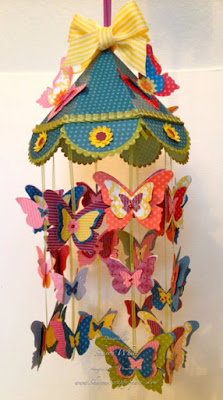


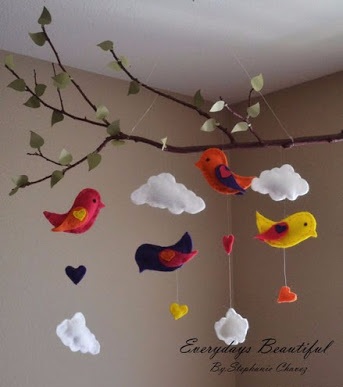
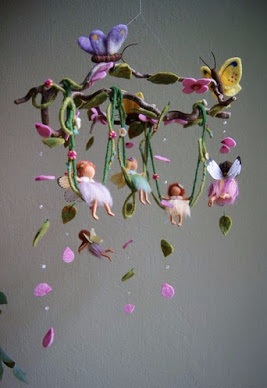
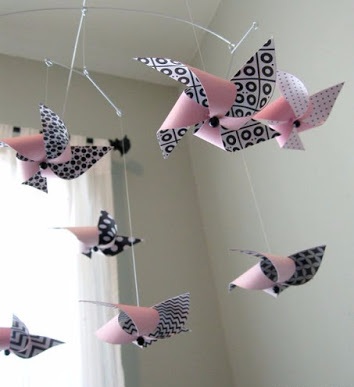
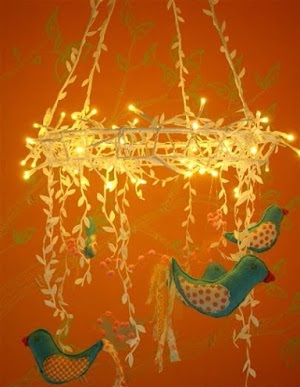
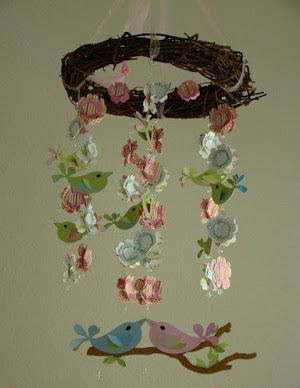
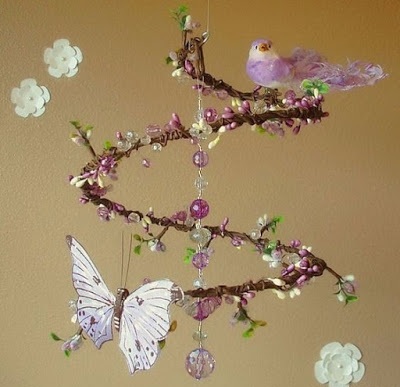



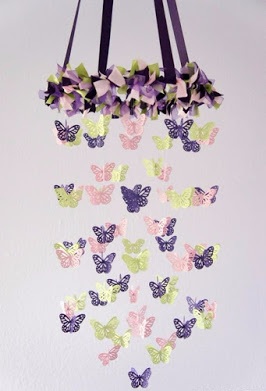
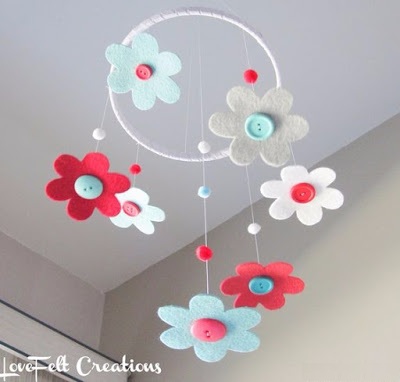
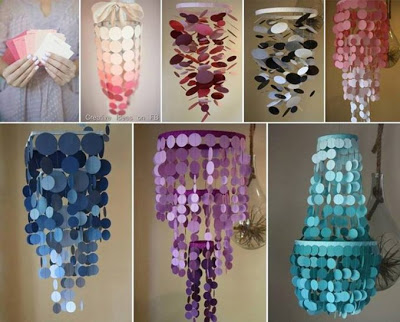
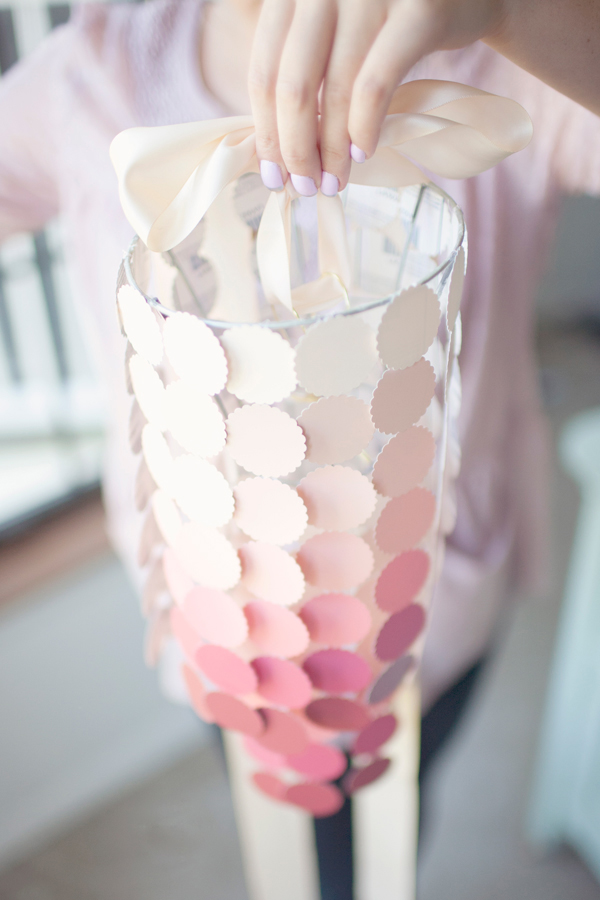
 You’ll need a whole bunch of paint swatches in your desired colours (seriously, emphasis on the whole bunch part). I picked a variety of blush, pink and red hues so I could get a fancy ombre look to my chandelier but I can only imagine how many different looks you could go for with your own chandelier. Using a scalloped paper punch you’ll need to punch about 40 -60 swatches into little medallions. Keep the medallions divided by colours in little saucers or cups like below.
You’ll need a whole bunch of paint swatches in your desired colours (seriously, emphasis on the whole bunch part). I picked a variety of blush, pink and red hues so I could get a fancy ombre look to my chandelier but I can only imagine how many different looks you could go for with your own chandelier. Using a scalloped paper punch you’ll need to punch about 40 -60 swatches into little medallions. Keep the medallions divided by colours in little saucers or cups like below. 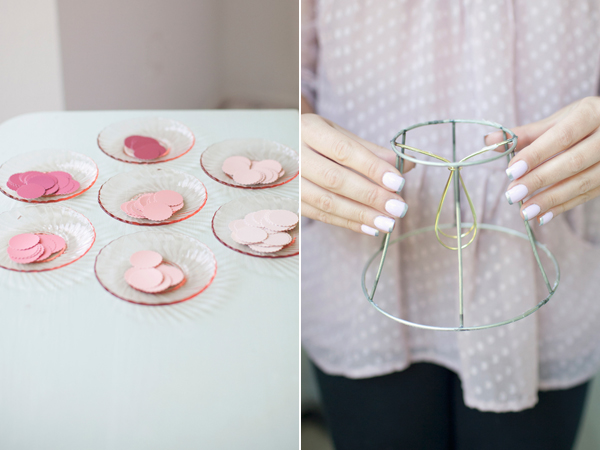 I bought my lamp shade (my chandelier base) from Lowes for about 5 bucks. Using an Exacto knife and super sharp metal scissors I carefully cut apart the fabric lamp shade, peeling away the pieces until the metal parts were as exposed as possible. When picking out a lamp shade I tried to pick out one where the bottom diameter is much smaller than the top. This will make your layers of paint swatch medallions hang better and thus look much better when the final product is done.
I bought my lamp shade (my chandelier base) from Lowes for about 5 bucks. Using an Exacto knife and super sharp metal scissors I carefully cut apart the fabric lamp shade, peeling away the pieces until the metal parts were as exposed as possible. When picking out a lamp shade I tried to pick out one where the bottom diameter is much smaller than the top. This will make your layers of paint swatch medallions hang better and thus look much better when the final product is done. 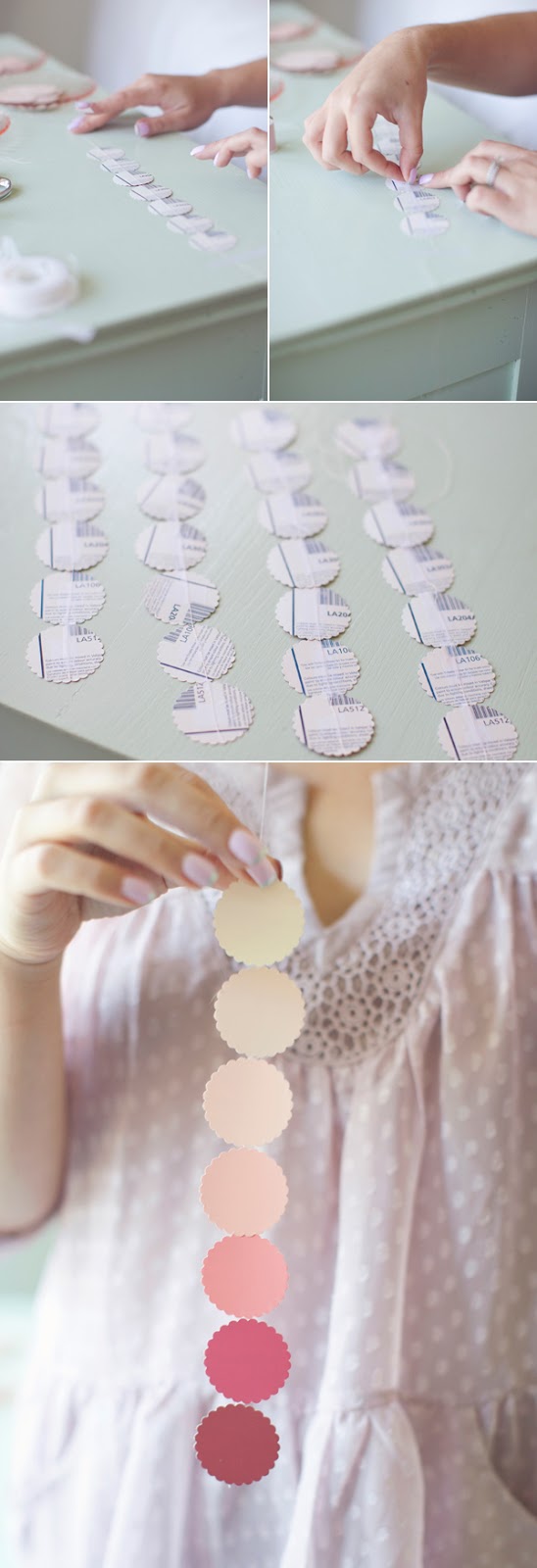 Lay out your paint medallions, coloured side down, in the desired order. Tape down a long piece of coloured thread along the middle of the backs of each medallion. Then using a piece of tape, cut down the center width wise, tape together the edges where one medallion meets the next. Without this final piece of tape, the medallions with rotate on their piece of thread, thus showing the bar codes, text and colour names usually located on the backs of the paint swatches. If that doesn’t bother you then this step isn’t necessary! Repeat this step until all of your chandelier strands are strung and taped together.
Lay out your paint medallions, coloured side down, in the desired order. Tape down a long piece of coloured thread along the middle of the backs of each medallion. Then using a piece of tape, cut down the center width wise, tape together the edges where one medallion meets the next. Without this final piece of tape, the medallions with rotate on their piece of thread, thus showing the bar codes, text and colour names usually located on the backs of the paint swatches. If that doesn’t bother you then this step isn’t necessary! Repeat this step until all of your chandelier strands are strung and taped together. 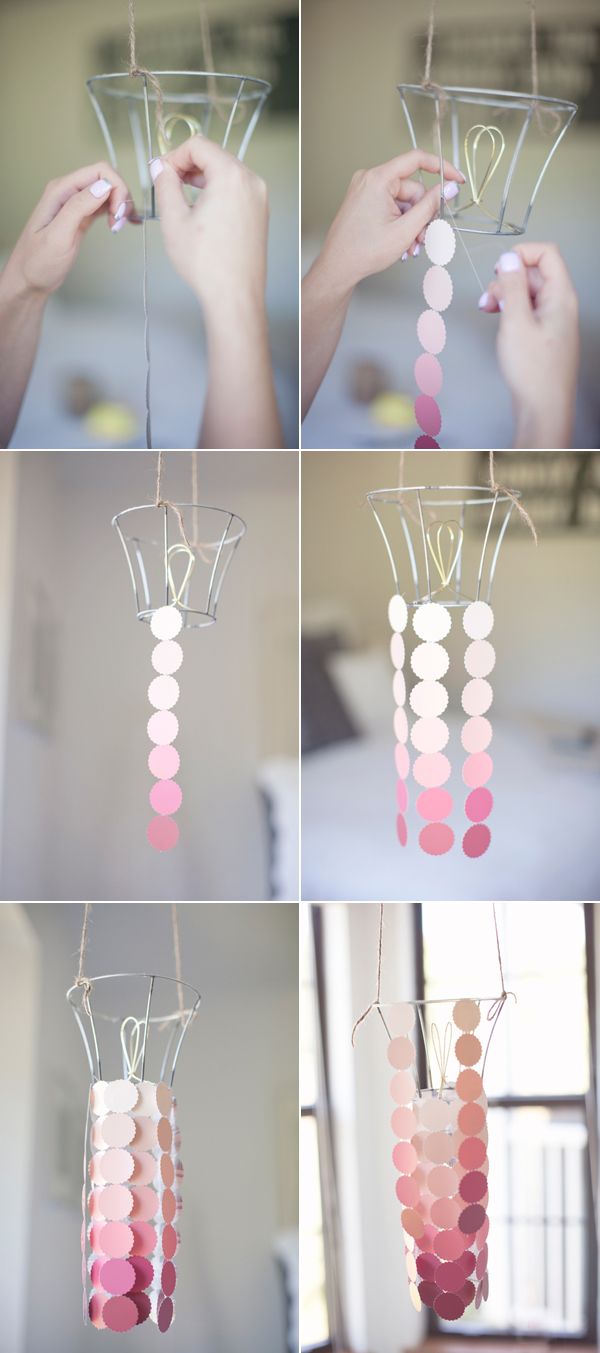 Flip your lamp shade upside down and fasten it somewhere where it can hang freely (I tied mine to the latch that opens and closes our air vent in our ceiling). Start stringing on your strands along the perimeter of the bottom of the chandelier until the entire metal base is covered. Then start stringing strands along the widest ‘top’ of your chandelier so that the lowest part of your strand hits the mid point of the bottom layer. Continue this all the way around until the entire chandelier is covered. Add a ribbon to the metal pieces (where the light bulb would pop in) and voila! You’re ready to hang this beauty!
Flip your lamp shade upside down and fasten it somewhere where it can hang freely (I tied mine to the latch that opens and closes our air vent in our ceiling). Start stringing on your strands along the perimeter of the bottom of the chandelier until the entire metal base is covered. Then start stringing strands along the widest ‘top’ of your chandelier so that the lowest part of your strand hits the mid point of the bottom layer. Continue this all the way around until the entire chandelier is covered. Add a ribbon to the metal pieces (where the light bulb would pop in) and voila! You’re ready to hang this beauty! 
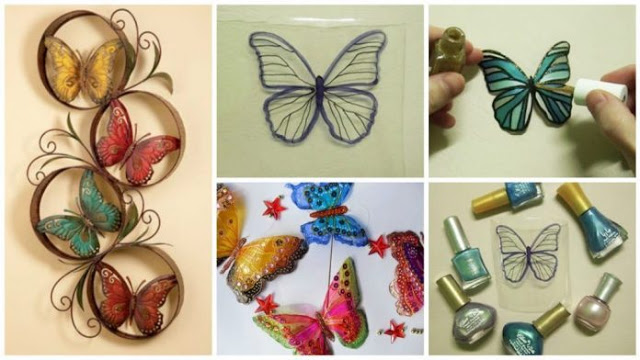

 Required Material:
Required Material: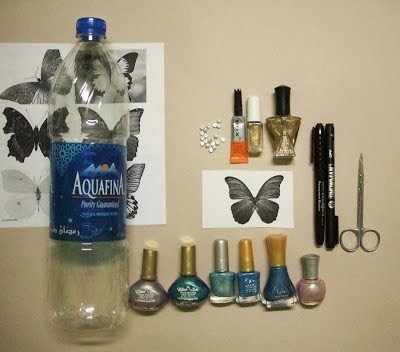
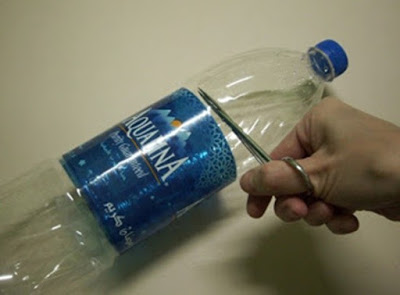 We get a sort of a sheet of transparent plastic.
We get a sort of a sheet of transparent plastic.  There is a picture butterfly shape that you would like to translate.
There is a picture butterfly shape that you would like to translate. 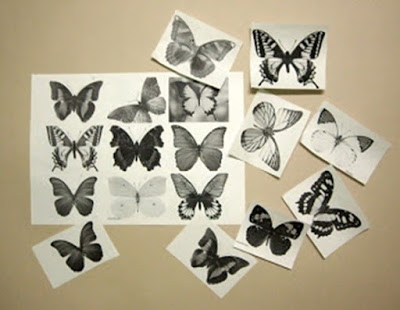 For a start is better to take pictures with clear lines and no small parts, for the first time use patterns – they are easier to translate than the photos, though
For a start is better to take pictures with clear lines and no small parts, for the first time use patterns – they are easier to translate than the photos, though 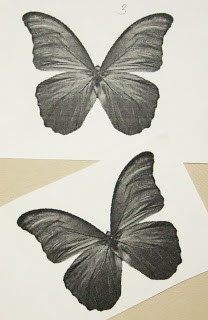 and can immediately begin with the complex images. They can be found in magazines, I printed out from the Internet and gently draw out the contours of the drawing. To do this, I usually use a thin black permanent marker. Today decided to try out the new – he was stout and blue, but that’s okay because these contours disappear under layers of varnish.
and can immediately begin with the complex images. They can be found in magazines, I printed out from the Internet and gently draw out the contours of the drawing. To do this, I usually use a thin black permanent marker. Today decided to try out the new – he was stout and blue, but that’s okay because these contours disappear under layers of varnish. 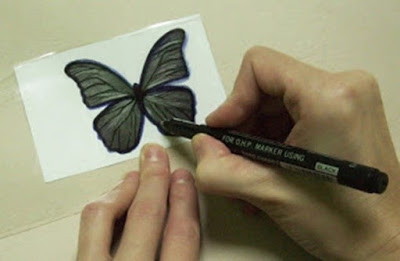 The plastic should stay your whole future butterfly with all the lines, streaks on the wings.
The plastic should stay your whole future butterfly with all the lines, streaks on the wings. 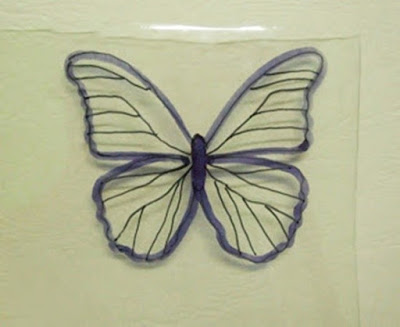

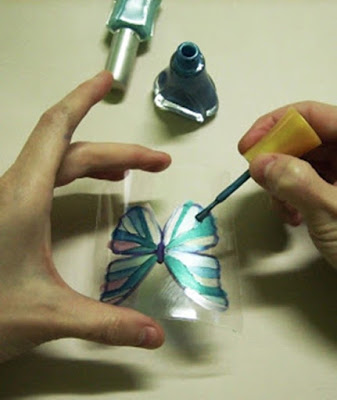 Impose 2-3 coats depending on the consistency of the nail, giving each layer to dry thoroughly.
Impose 2-3 coats depending on the consistency of the nail, giving each layer to dry thoroughly.  Finally, you can do embellishment. All black lines plot the silver or gold glitter (brush should be very thin – in such nail brush drawing on nails).
Finally, you can do embellishment. All black lines plot the silver or gold glitter (brush should be very thin – in such nail brush drawing on nails). 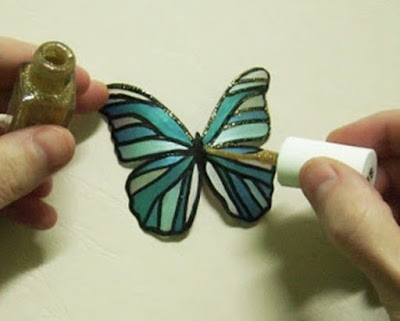
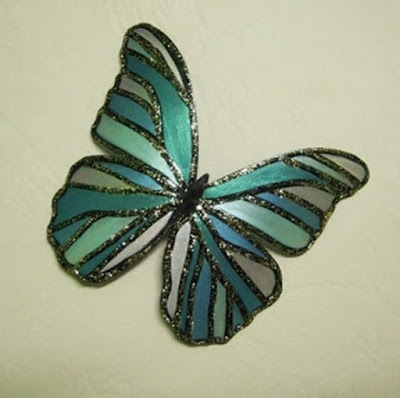 That’s all – our butterfly is ready.
That’s all – our butterfly is ready. 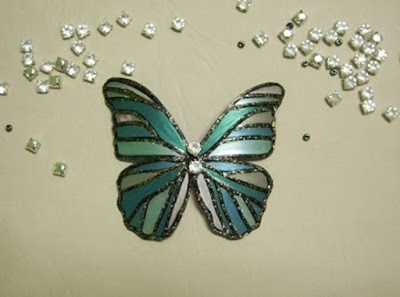 Another work
Another work 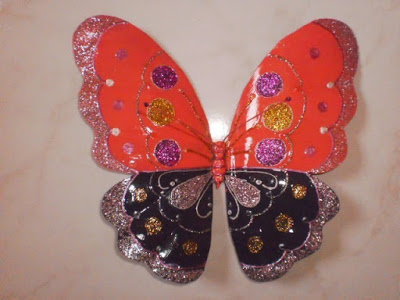

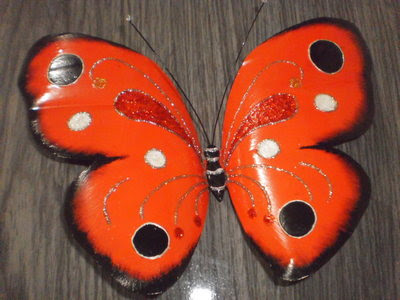
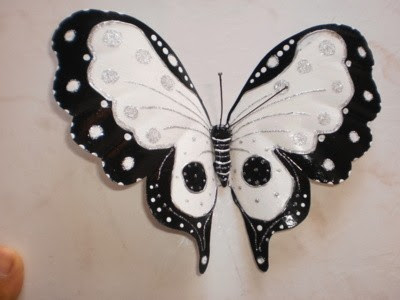
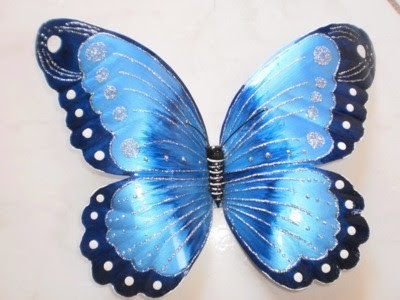
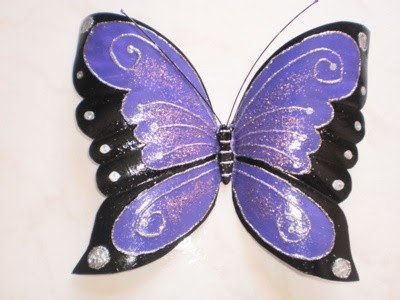
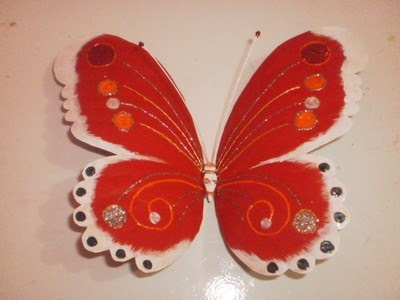


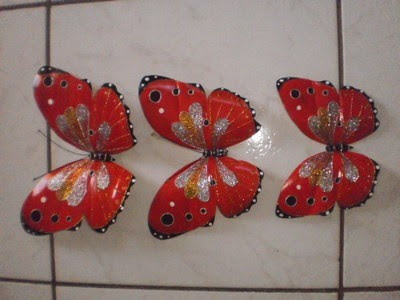
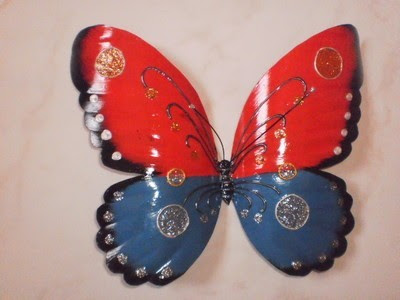
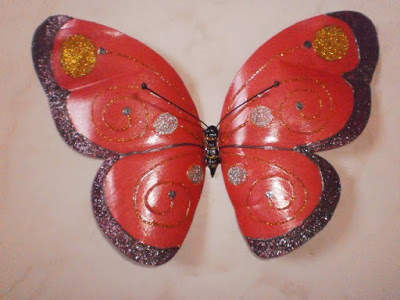
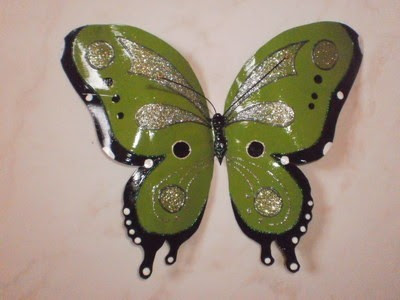
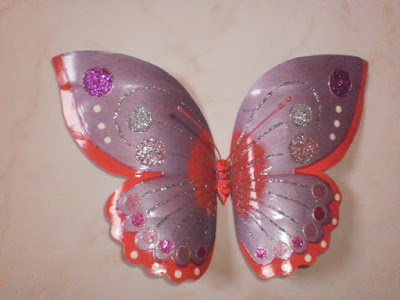
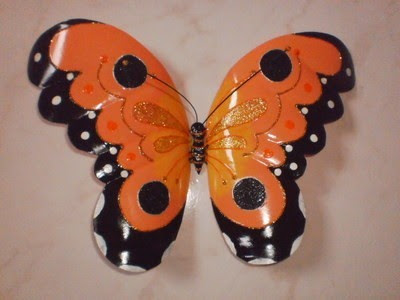

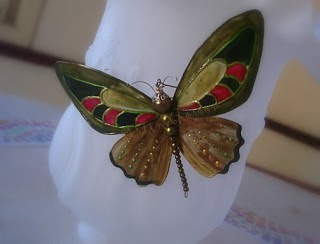
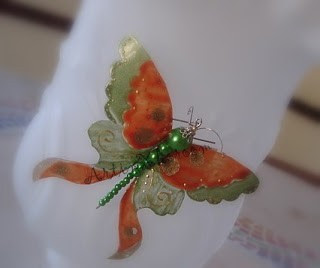
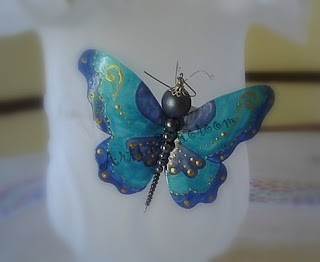
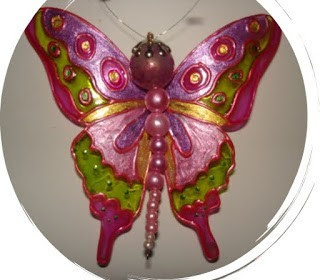

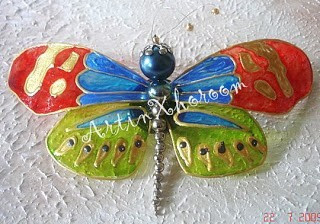
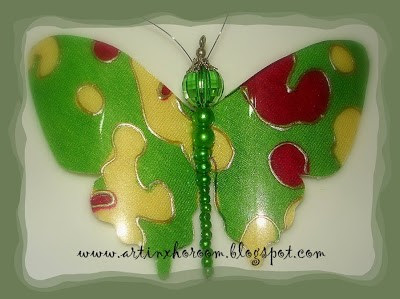

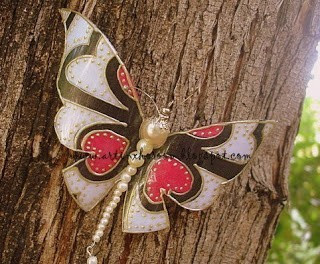
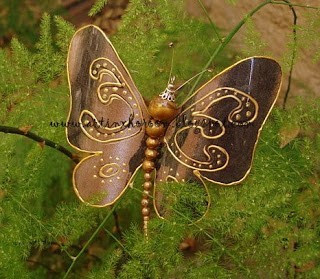
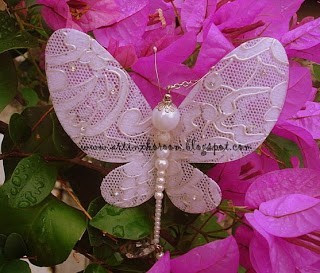
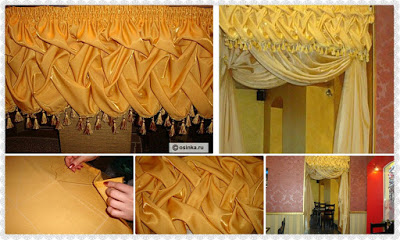
 We eaves length 1.3 m – needs a piece of fabric 3.25 +0.5 (allowance at side seams), only 3.3 m.
We eaves length 1.3 m – needs a piece of fabric 3.25 +0.5 (allowance at side seams), only 3.3 m. he harvested tissue peruse for defects, check the length and width, steamed iron.
he harvested tissue peruse for defects, check the length and width, steamed iron. The sides of the future curtains See photos.
The sides of the future curtains See photos.  For comfortable work and avoid errors, you need to make patterns out of cardboard.
For comfortable work and avoid errors, you need to make patterns out of cardboard. Choose a place where we are going to create your masterpiece. Ideal – a large table. It decompose and flatten stripped cloth. The fabric should lie face down.
Choose a place where we are going to create your masterpiece. Ideal – a large table. It decompose and flatten stripped cloth. The fabric should lie face down. Now, take the curve №2 (width 18 cm), apply to have the line drawn by again drawing a line along the entire length of our fabric. Repeat this process three times. We have to be parallel to the line width: 8 cm, 18 cm, 18 cm, 18 cm
Now, take the curve №2 (width 18 cm), apply to have the line drawn by again drawing a line along the entire length of our fabric. Repeat this process three times. We have to be parallel to the line width: 8 cm, 18 cm, 18 cm, 18 cm  Take curve №3, we are putting any of the side seams and perpendicular lines to the already drafted. We get the mesh.
Take curve №3, we are putting any of the side seams and perpendicular lines to the already drafted. We get the mesh.  To make it convenient to work in the cells draw a diagonal, as shown in the photo.
To make it convenient to work in the cells draw a diagonal, as shown in the photo.  Take the needle and thread in tissue tone, and at the cell diagonally fasten the first puff.
Take the needle and thread in tissue tone, and at the cell diagonally fasten the first puff.  Stitches tacks do five – six times.
Stitches tacks do five – six times.  Secure all puffs for this series.
Secure all puffs for this series.  The next series begin to fix on the side where you’ve finished the first row whip. Follow the scheme.
The next series begin to fix on the side where you’ve finished the first row whip. Follow the scheme.  Third row starts where finished second whip. And so all the rows under the scheme. Be careful.
Third row starts where finished second whip. And so all the rows under the scheme. Be careful.  This is the result of the first phase of your work. The truth is impressive?
This is the result of the first phase of your work. The truth is impressive?  The bottom of the curtains in our master class we will process the fringe. In fact, the methods of processing weight: seam in the hem, processing piping, lace, beads …
The bottom of the curtains in our master class we will process the fringe. In fact, the methods of processing weight: seam in the hem, processing piping, lace, beads … We are putting a fringe to the bottom edge of the curtains. We combine slices. Fabric and fringe wrong side together. Sew,
We are putting a fringe to the bottom edge of the curtains. We combine slices. Fabric and fringe wrong side together. Sew,  Now, gently loosen the fringe on the front side. Do this for the entire length of the edge of the fringe and paving machines line.
Now, gently loosen the fringe on the front side. Do this for the entire length of the edge of the fringe and paving machines line.  Bottom curtains ready. Look inside out – it’s perfect.
Bottom curtains ready. Look inside out – it’s perfect.  It remains to handle the upper section of the curtains. Take special braid for processing top curtains. Put them to the wrong side of each other. Pre-need to hem curtains and braid 1 cm. Sew their machine stitching.
It remains to handle the upper section of the curtains. Take special braid for processing top curtains. Put them to the wrong side of each other. Pre-need to hem curtains and braid 1 cm. Sew their machine stitching.  Lay the second parallel line is strictly for lace center. Line lay on the front side. The ends of the thread carefully hide.
Lay the second parallel line is strictly for lace center. Line lay on the front side. The ends of the thread carefully hide.  Run the same parallel line on the edge of the tape. Gently pull the fabric by hand.
Run the same parallel line on the edge of the tape. Gently pull the fabric by hand.  Contractible four strands to braid. Puffs acquire a very different kind.
Contractible four strands to braid. Puffs acquire a very different kind.  And then, finally, the result of work. Beauty, is not it?
And then, finally, the result of work. Beauty, is not it?  So, this curtain looks in the doorway.
So, this curtain looks in the doorway. 

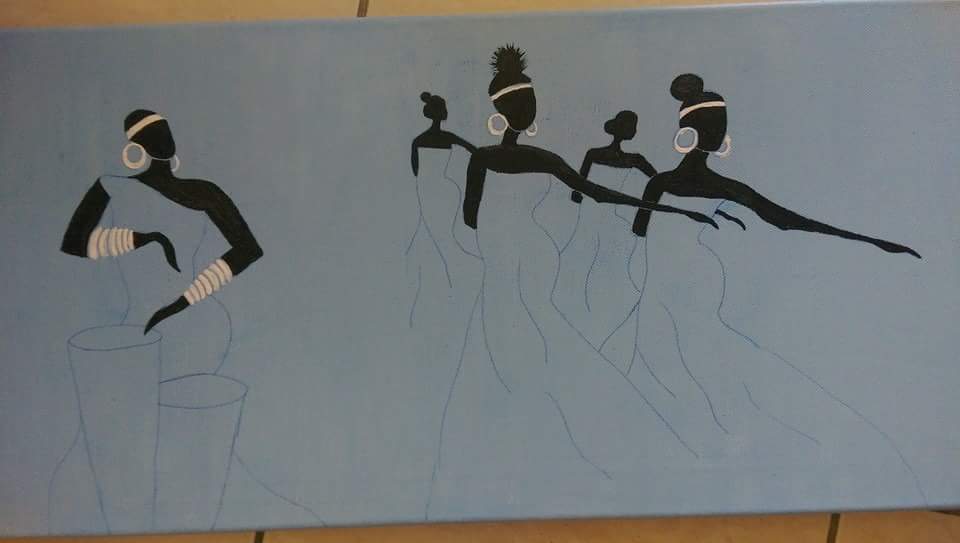

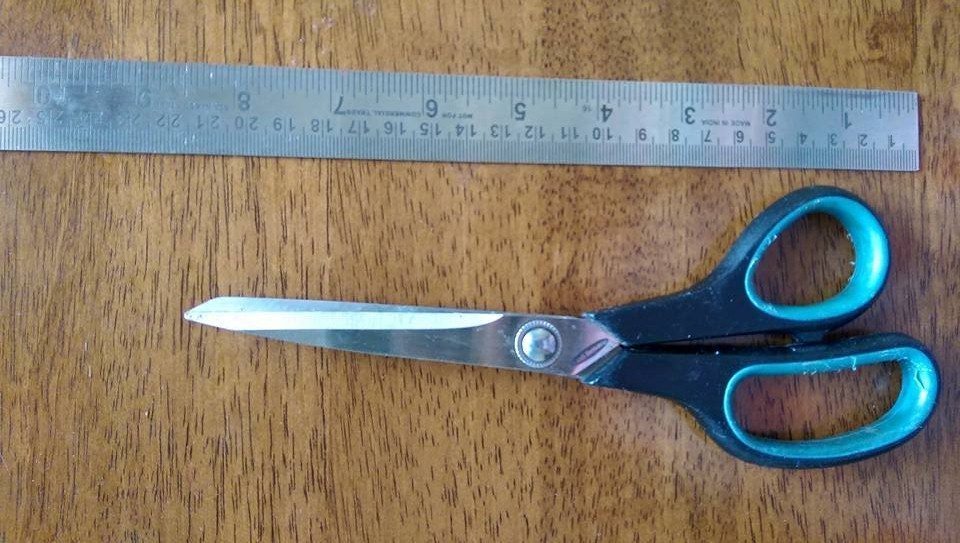 3. Use glue to glue the pieces CD on the canvas.
3. Use glue to glue the pieces CD on the canvas.